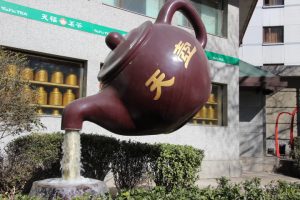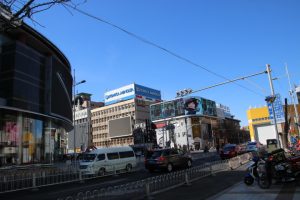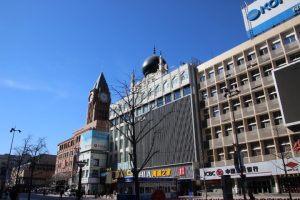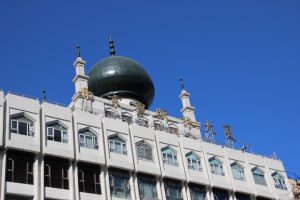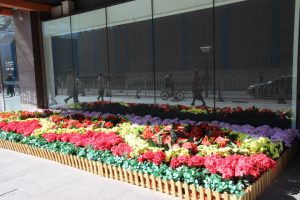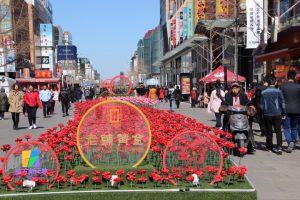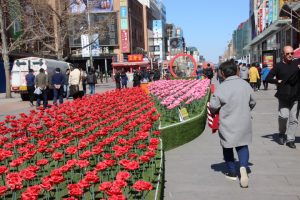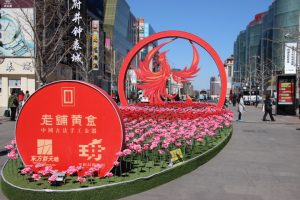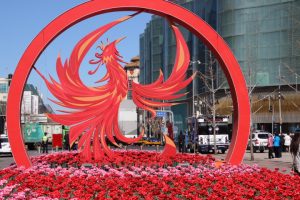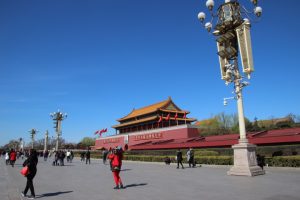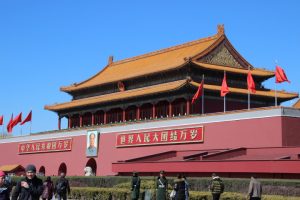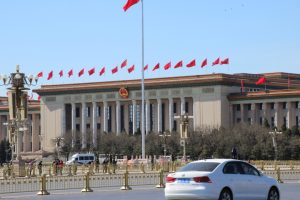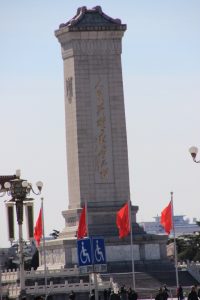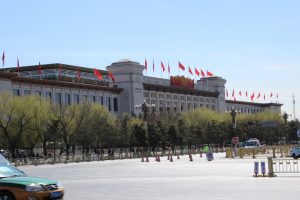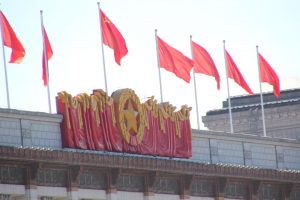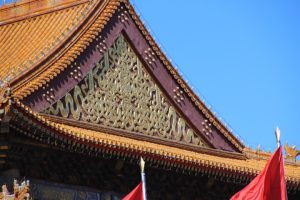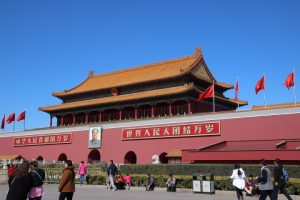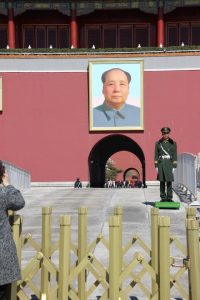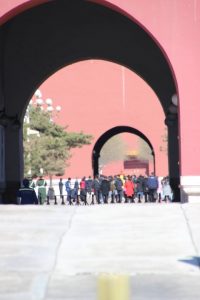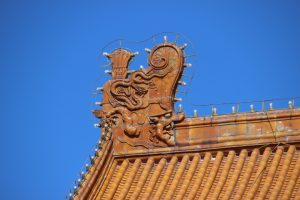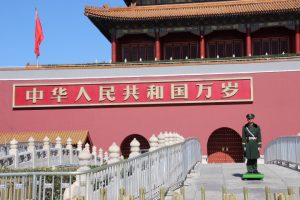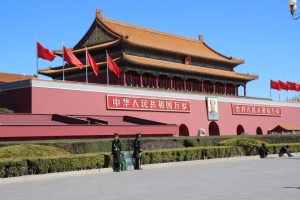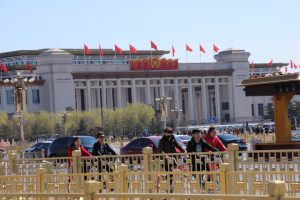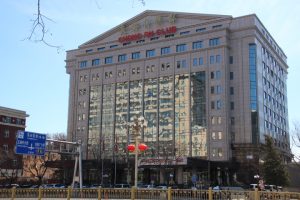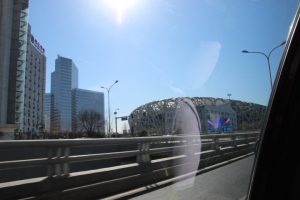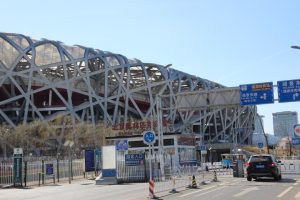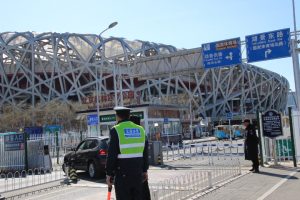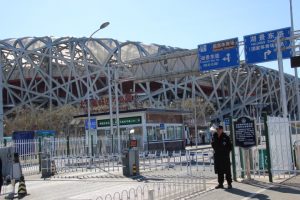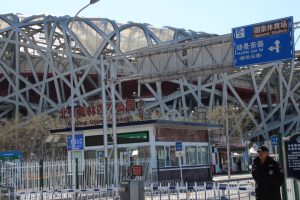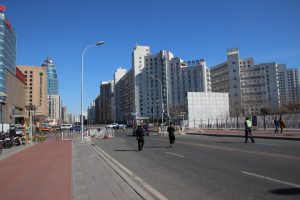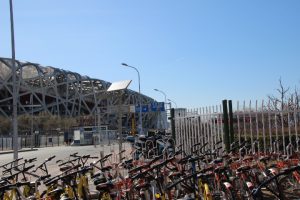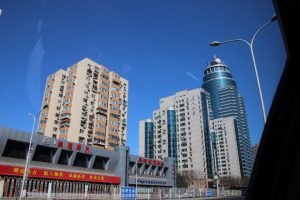Beijing has had a chequered history since its first settling in 1045 BC. The Mongol warrior Ghengis Khan destroyed the city in 1215 but by the 15th century the basic grid of the present day city was established. Modern Beijing came of age when in January 1949 the People’s Liberation Army entered the city and by October the city was declared a People’s Republic in front of an audience of 500,000 citizens at the Gate of Heavenly Peace in Tiananmen Square. The city of today, certainly in the central area, has undergone schemes of beautification and is spotless.
On our last visit the city was seriously affected by smog but there has been considerable investment in the use of low emission vehicles, dual fuel buses, electric cars and an army of bicycles for rent. Today the sky was blue and for the first time on this adventure we witnessed sunshine at 7:30 a.m.
Tiananmen Square is the world’s largest public square and is the location of the entrance to The Forbidden City and the Great Hall of the People where the Chinese Congress is sitting at the moment. Again security was tight which meant standing in line for 40 minutes in order to progress through the security checks to enter the square. When the policeman inspected our passports it was a scene of great curiosity by the locals who only have an ID card to show. The man in front of us actually looked at the photograph in the passports and turned around, almost in surprise, that the real person was behind him!
This afternoon we convinced a taxi driver to take us on a swift trip across the city to the National Stadium, situated in the Olympic Park in a very remote suburb. The stadium that can house 91,000 people was nicknamed, because of its construction, the ‘Bird’s Nest’. It was used to stage athletics and football as well as the opening ceremony of the 2008 Olympics. The television view and that of guidebooks was not available to us today because of tight security and we were surprised how closely surrounded it is with high-rise commercial buildings. An elevated wide-angle lens on a television camera easily portrays a different scene than that witnessed by a ground level visitor.
